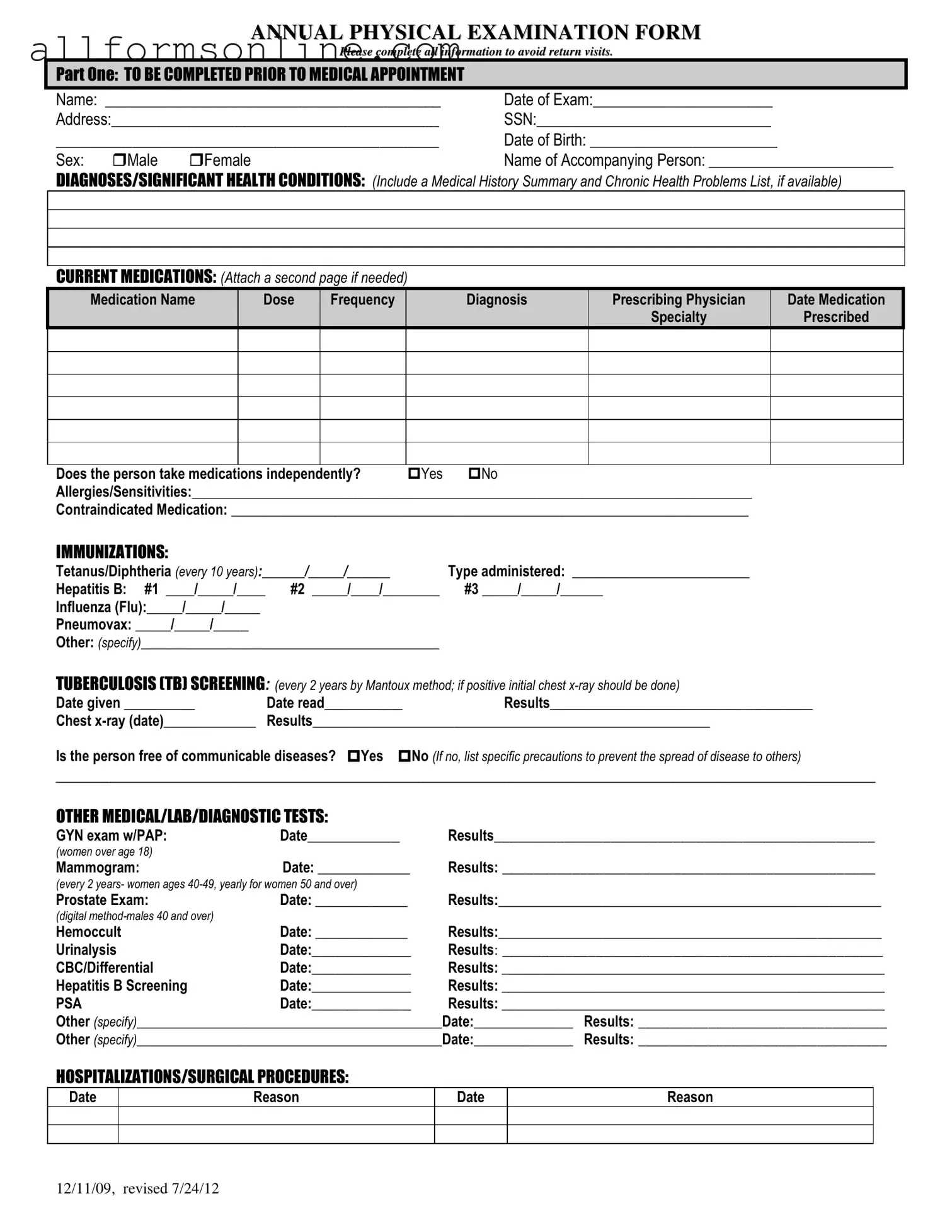What is the purpose of the Annual Physical Examination form?
The Annual Physical Examination form is designed to gather important health information about an individual before their medical appointment. It helps ensure that the healthcare provider has a comprehensive understanding of the patient's medical history, current medications, allergies, and any significant health conditions. Completing this form accurately can help avoid the need for return visits due to missing information.
What information is required in Part One of the form?
Part One of the form requires personal details such as the individual's name, date of exam, address, Social Security number, date of birth, and sex. It also asks for the name of an accompanying person and details about any significant health conditions, current medications, allergies, and immunizations. This section aims to provide a complete picture of the individual's health status prior to the appointment.
How should medications be listed on the form?
When listing medications, include the name of each medication, the dose, frequency of intake, diagnosis for which it is prescribed, the name of the prescribing physician, and the date it was prescribed. If there are multiple medications, attach an additional page as needed. Indicate whether the person takes medications independently and note any allergies or sensitivities to medications.
What is included in Part Two of the form?
Part Two of the form focuses on the general physical examination. It includes vital signs such as blood pressure, pulse, respirations, temperature, height, and weight. It also assesses various body systems, asking whether normal findings were observed. Additional comments can be made regarding medical history, medication changes, recommendations for health maintenance, and any limitations or restrictions on activities.
What should be done if there is a change in health status from the previous year?
If there has been a change in health status, it should be noted on the form. Specify the nature of the change and any relevant details. This information is crucial for the healthcare provider to understand the individual's current health situation and to make informed decisions regarding their care.
